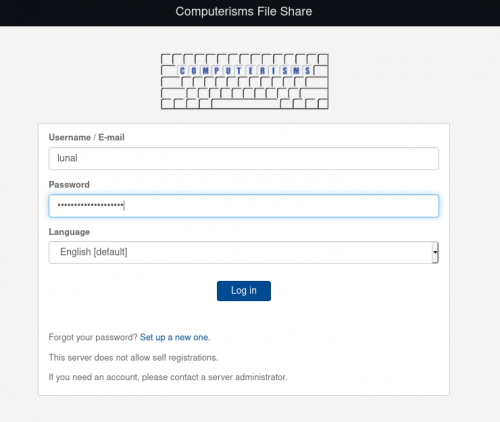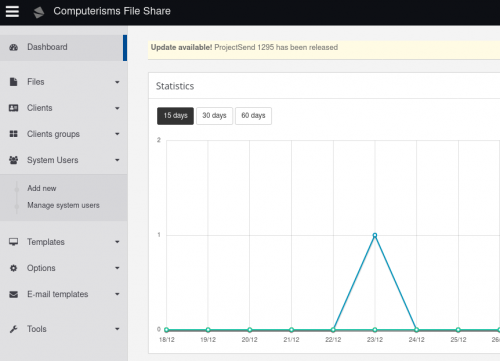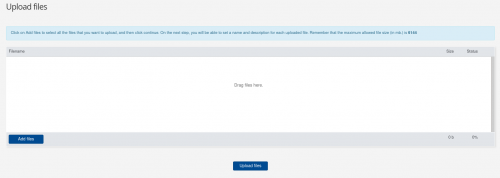Fetch: Difference between revisions
Jump to navigation
Jump to search
| Line 24: | Line 24: | ||
|[[File:Help.fetch.first.menu.png|center|500px]] | |[[File:Help.fetch.first.menu.png|center|500px]] | ||
| | | | ||
* | *On the sidebar, click System Users, then Add new | ||
|- | |- | ||
| | | | ||
*Set the login name | *Set the display name for the user <b>(this is different from the name they will use to login!) | ||
**Note this does not have to be in the format of an email address | **A suggestion would be to make this the user's full name, or something that you will recognize the user by for later management. | ||
**The advantage to using an email address as a login name is your users will not have to remember a different login name for this service | *Set the log in username | ||
**Note this does not have to be in the format of an email address, you are free to set anything you want | |||
**The advantage to using an email address as a login name is your users will not have to remember a different login name for this service | |||
*Set the Password | *Set the Password | ||
**You can set the password to be the same as the user's email password, but updating the email password will not update this password | **You can set the password to be the same as the user's email password, but updating the email password will not update this password | ||
* | **You can also hit Generate to create a very secure jumble of letters for the password, but this may be hard to remember for the user | ||
*Enter the user's Email Address | *Enter the user's Email Address | ||
*Set the | *Set the Role for this user: | ||
**Administrator | **System Administrator will allow this user to add new users and modify them, and modify the system | ||
** | **Account Manager will allow this user to add new users and modify them, but not modify system settings | ||
**Uploader will allow the user to log in and upload files to be delivered to other users | |||
***This group is where you should put your staff | ***This group is where you should put your staff | ||
* | *Max upload filesize is for if you wish to limit the size of files this user can upload. This is not global, it only affects the user you are creating | ||
** | **Set it to 0 to automatically set the max size to the server-wide default | ||
* | *Ensure the Active checkbox is selected, otherwise the user will be unable to login | ||
* | *Check Send welcome email if you'd like to have the user be sent their new account login credentials via email. If this is not selected, the user will be created but you will have to provide the username and password to them via a different method | ||
*Rinse and Repeat for every user on your network that will need to send large files | *Rinse and Repeat for every user on your network that will need to send large files | ||
|[[File:Help.fetch.add.user.2.png|center|500px]] | |[[File:Help.fetch.add.user.2.png|center|500px]] | ||
Revision as of 00:12, 2 January 2021
Accessing the Service
- You can reach this service by pre-pending fetch to your domain name and entering it in the address bar of your browser
- By example: fetch.domain.tld
Large File Transfers
- Many mail servers do not accept mail with large attachments, most will limit the size of allowable mail to between 5 and 10 MB
- The Computerisms mail server allows mail with attachments up to ~10 MB in size
- This utility can transfer files up to 2 GB in size
- This utility is straightforward and easy to use
- This utility employs a number of features to encrypt connection and prevent unwanted people and bots from accessing your data
- This utility uses its own username/password database, which means your email username and password are not necessarily the same as they are for Fetch.
Setting up Users on the Computerisms Hosted Fetch Utility
|
 |
 |
|
|
 |
Transferring Large Files
|
 |
 |
|
|
 |

|
|
|
 |